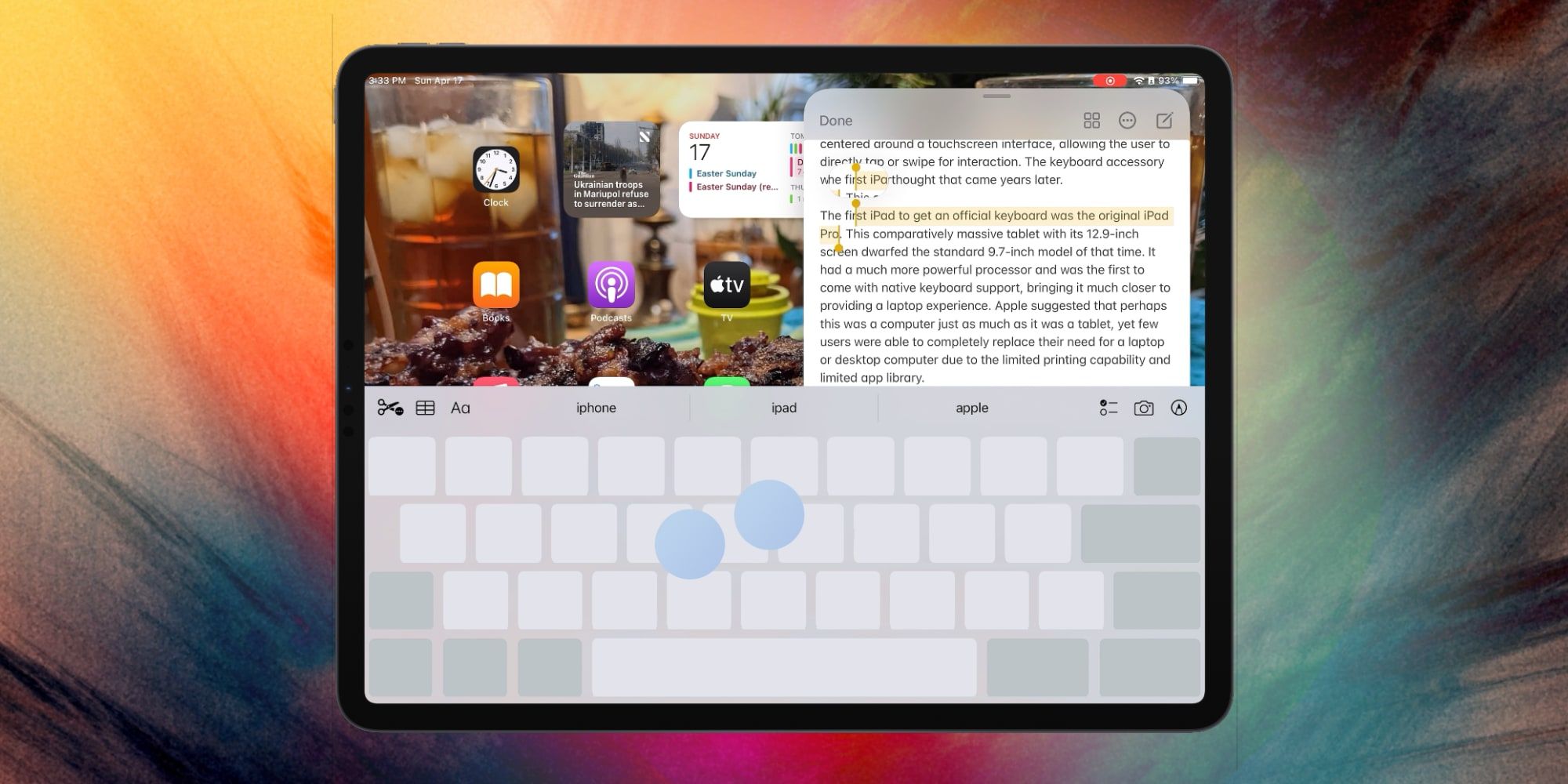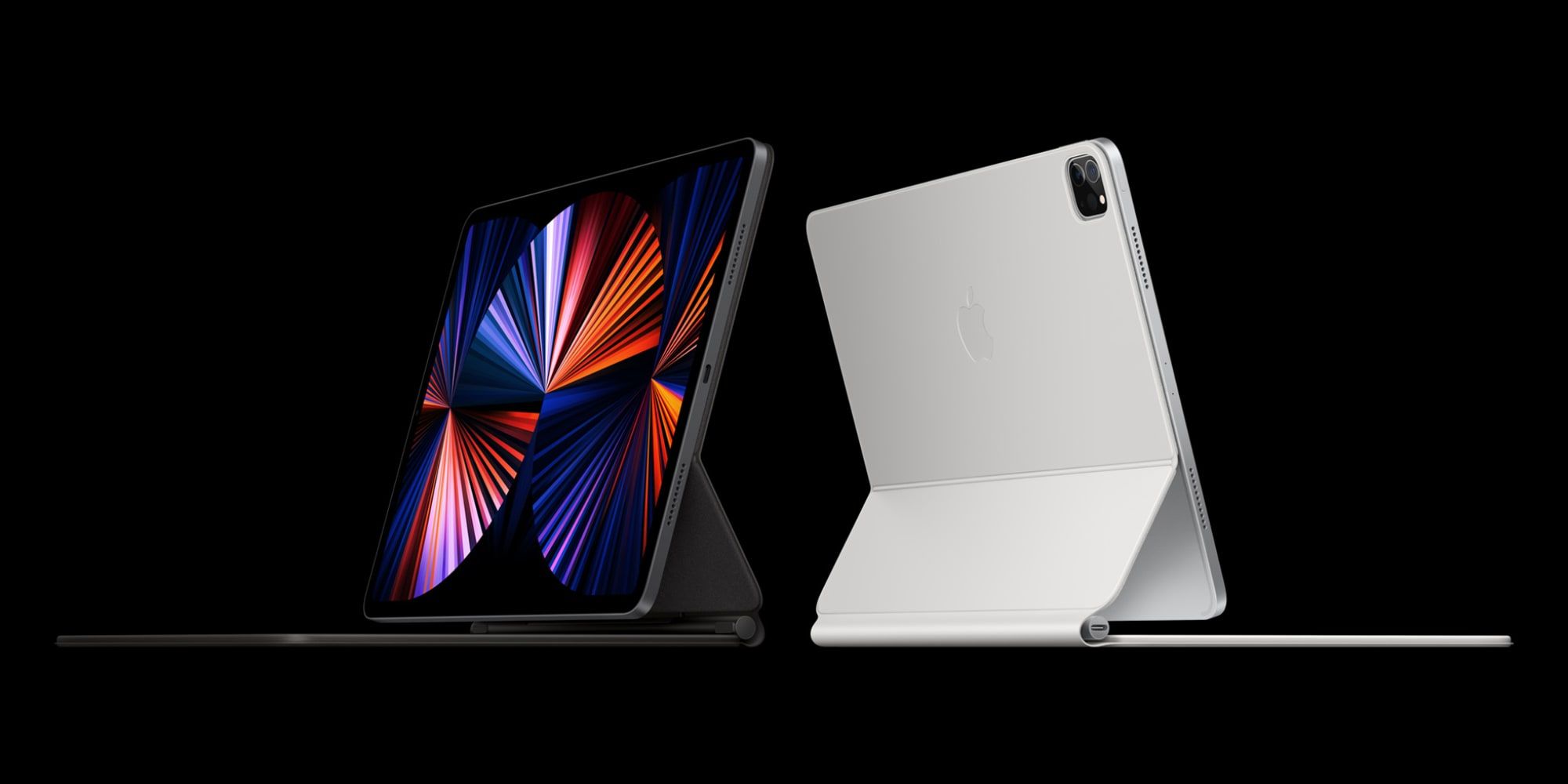The iPad is as powerful as a computer. However, its operating system lags behind, making it necessary to buy Apple's MacBook or Mac for some types of work. This is true even of the latest iPad Pro, which is powered by the same M1 processor as several Mac computers. Among the most significant differences is that the iPad is centered around a touchscreen interface, allowing the user to directly tap or swipe for interaction. The keyboard accessory was an afterthought that came years later.
The first iPad to get an official keyboard was the original iPad Pro. This comparatively massive tablet, with its 12.9-inch screen, dwarfed the standard 9.7-inch model of that time. It had a much more powerful processor and was the first to come with native keyboard support, bringing it much closer to providing a laptop experience. Apple suggested that perhaps this was a computer just as much as it was a tablet. Yet, few users were able to completely replace their need for a laptop or desktop computer due to the limited printing capability and limited app library.
In Bloomberg’s latest PowerOn Newsletter, a case is made for the iPad Pro to get two new modes of operation, something that Steve Jobs strongly opposed. The idea described is to make an iPad Pro behave more like a Mac when a keyboard and trackpad or mouse are connected. Bloomberg’s Mark Gurman also suggested a new mode of operation when using the Apple Pencil. In each case, iPadOS would adjust the controls available to take advantage of the finer precision that's possible when using these accessories. The main benefit would be to allow freely resizable app windows and widgets instead of the somewhat rigid layout the iPad currently has. It’s a small detail that would significantly impact how an iPad is used. This doesn't solve the app gap. However, the App Store has grown enormously since the early days of the iPad, and nearly every need is covered, leaving fringe apps and windowing as the primary differences.
An iPad Keyboard Mode Isn't Needed
Steve Jobs opposed the idea of different modes of operation since it could leave the user confused. Skeuomorphic design is central to the original concept of the iPhone and iPad, making on-screen controls behave like objects in the real world, so people know how to use them intuitively. Thankfully, there's no need to alter iPadOS' behavior when an accessory is attached to solve this problem of providing higher-precision control. iPadOS could add a two-finger gesture to allow precise cursor positioning to allow free-form layouts with more accurate movement.
Interacting with one finger could remain as before, allowing swipe gestures and dragging after a press and hold. The new two-finger drag would reveal a cursor, allowing mouse-like movement, like holding the on-screen keyboard’s space bar, enters a trackpad mode. It’s unlikely Apple will break its own golden rule to give the iPad Pro a separate keyboard and trackpad mode, but a precision drag gesture would make sense and is already implemented in the on-screen keyboard. It's already possible to press and hold the keyboard with two fingers to drag a text cursor around with enhanced accuracy. The iPad already has a refined movement option that simply needs to be expanded.
Source: Bloomberg


